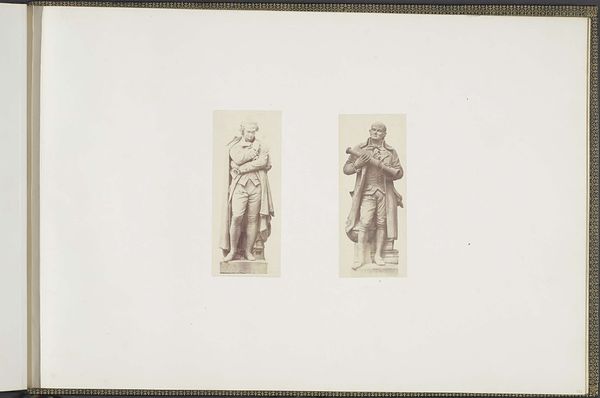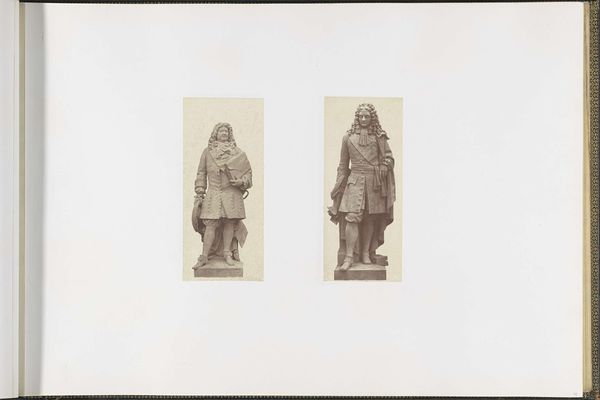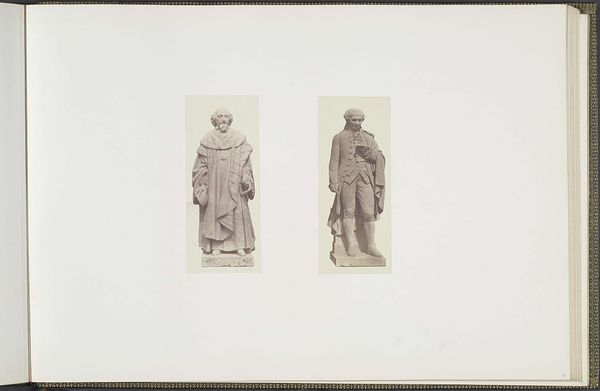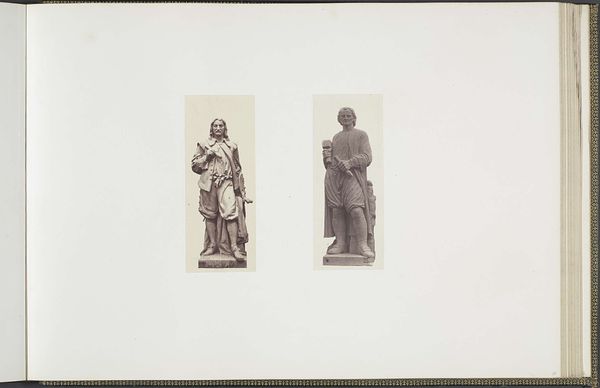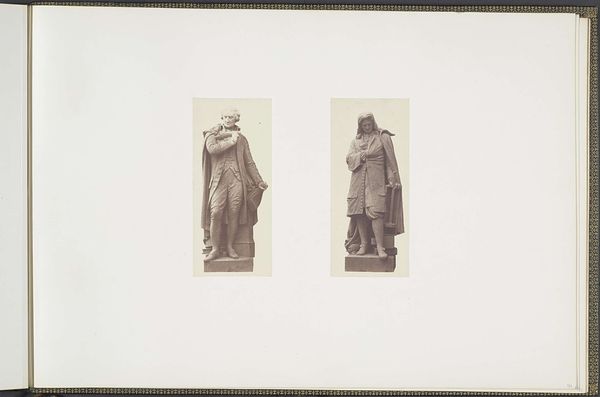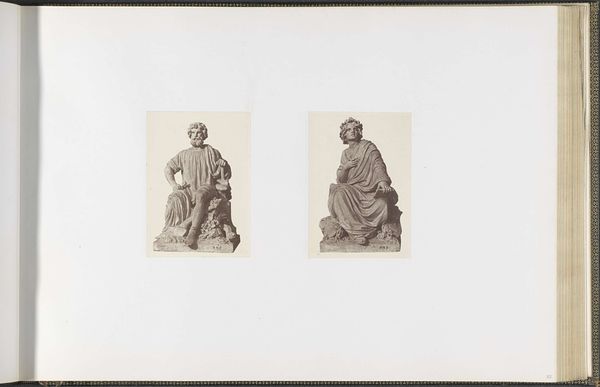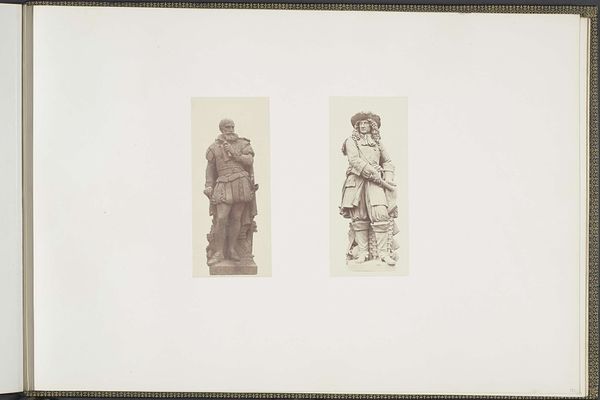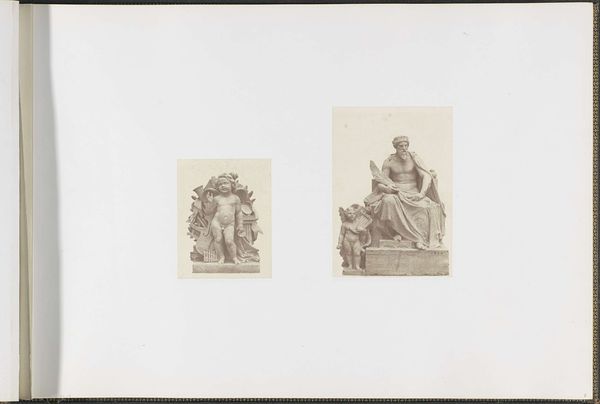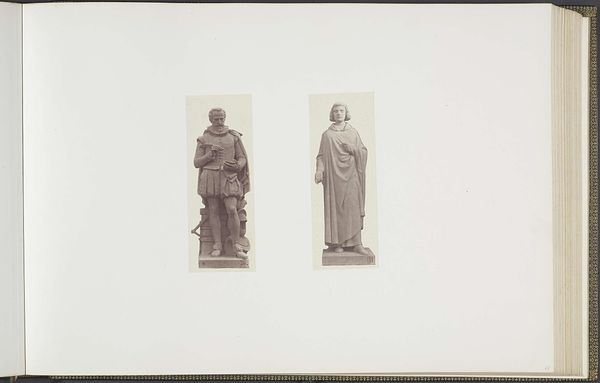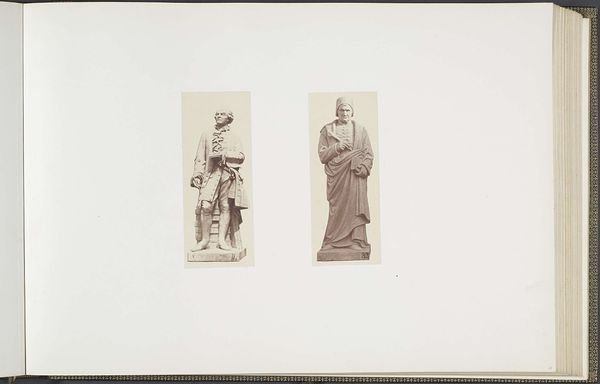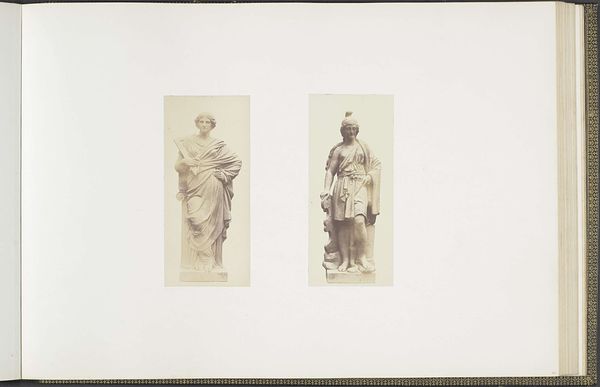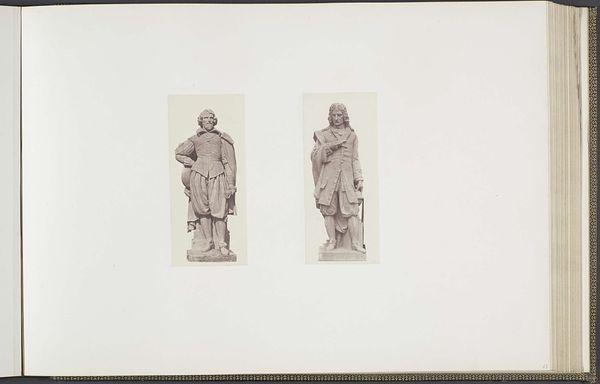
Gipsmodellen voor beeldhouwwerken op het Palais du Louvre: links "Le Lorrain" door Auguste Hyacinthe Debay en rechts "Grétry" door Victor Vilain c. 1855 - 1857
0:00
0:00
print, photography, sculpture
#
portrait
# print
#
classical-realism
#
photography
#
sculpture
#
academic-art
Dimensions: height 382 mm, width 560 mm
Copyright: Rijks Museum: Open Domain
Curator: My initial impression is how incredibly static these two figures appear; like ghosts in a forgotten photo album. There's something melancholic about it. Editor: Well, let’s delve a little deeper, shall we? This albumen print, dating from around 1855 to 1857, comes to us from the lens of Edouard Baldus, and it currently resides at the Rijksmuseum. The photograph shows plaster models of sculptures made for the Louvre palace. On the left is "Le Lorrain" by Auguste Hyacinthe Debay and on the right is "Grétry" by Victor Vilain. Curator: Ah, yes, now that you mention it, the ghostly quality I perceived is amplified by this sense of them being copies, models preparing to stand for something monumental, trapped in time. Did Baldus often focus on this in-between state? Editor: Baldus often photographed architecture and monuments in transition. The documentation of public works, like the Louvre's additions under Napoleon III, was a key part of his practice. So yes, the state of 'becoming' was very much part of his project. The statues represent Claude Lorrain, a painter of the Baroque era, and André Grétry, a composer, who both symbolize artistic genius tied to France. They form part of the visual language deployed to solidify national identity. Curator: It is remarkable how the artistic choices serve ideological purposes. The symbol of France solidifies not just the present but ties the past through symbols of excellence in art. Do we have more information as to why specifically these two characters? What's intriguing is the apparent separation between painting and music... What could this mean? Editor: The selection probably had to do with contemporary tastes and the desire to present a diverse image of French cultural achievement through these specific emblems. And about separating them through the sculptural forms, I don't have much more insight, that's a very good question! Curator: Yes, the interplay is potent – France, greatness, captured as a model of a statue captured in the photograph...It echoes and it makes the viewer think not just about those statues themselves, but of its cultural environment. Editor: I agree. Baldus gives us more than just a photograph, doesn't he? Curator: Absolutely! Thanks for providing further insight!
Comments
No comments
Be the first to comment and join the conversation on the ultimate creative platform.
